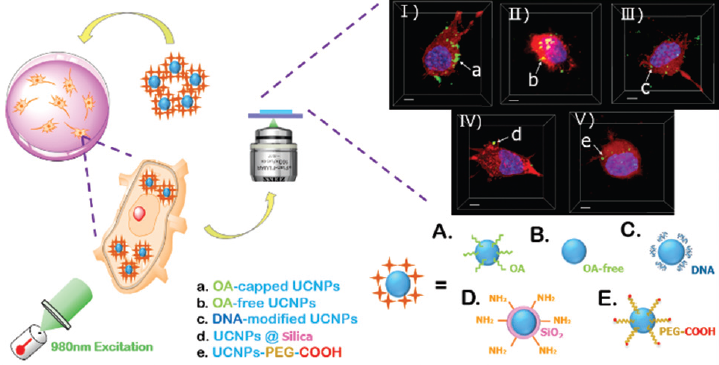Abstract
There is considerable interest in developing diagnostic nanotools for early detection and delivery of various therapeutic agents for treatment of neurodegenerative diseases. However, a key challenge remains in the selection of suitable surfaces to overcome the nano–bio interface issue, namely that many nanoparticle surfaces demonstrate instability when administered into biological environments and show substantial cytotoxicity to the central nervous system. In this study, we fabricated an evaluation platform for bio–nano surface selection based on the combination of upconversion nanoparticles (UCNPs), cultured neural cells and zebra fish, and systemically demonstrated how it can evaluate the suitability of nanoparticle surfaces for applications in the central nervous system. Firstly, we fabricated highly lanthanidedoped UCNPs, which generate the strongest tissue penetrable emission at 800 nm. We then functionalized these UCNPs with four popular surfaces for evaluation. Next, we systematically evaluated the spectral emission properties, biophysical stability, cytotoxicity and cell uptake capability of these surface-functionalized UCNPs in biological solutions or with cultured NSC-34 cells. Through these studies, PEG-COOH proved to be the superior surface modification. Accordingly, we further confirmed the bioavailability of unmodified and surface modified UCNPs in the spinal cord of living zebrafish. As predicted, PEG-UCNPs displayed excellent dispersal and uptake into spinal motor neurons in living zebrafish. Collectively, this study developed a versatile upconversion platform for systematic evaluation of nanoparticle surfaces, which can provide valuable information via systemic surface evaluation in vitro and in vivo for future construction of multifunctional nanosystems for theranostic applications in neurodegenerative diseases.

